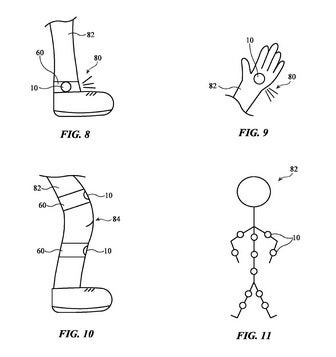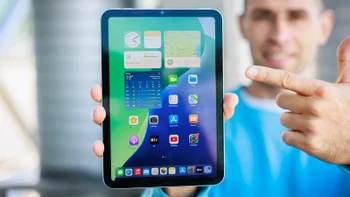Apple tries to hide its involvement in a new patent application

Looking to hide a new patent application filed back in 2020, Apple submitted it under the names of the engineers involved and did not mention the Apple name. However, if the patent is granted in the U.S., it will be awarded to Apple. That's because the patent has now been published and Apple's subterfuge is no longer necessary. Considering the lengths that Apple went to in order to hide its involvement in the patent application process, the patent must cover some amazing technology. An iPhone that transforms into a self-driving car maybe?
Unfortunately, that's not the case. Filed with the European Patent Office (viaPatentlyApple), the patent involves the use of wearable tags that are placed on a person's clothing or body. These tags will monitor certain health-related data such as how much exposure to the sun a person is getting, whether their posture is straight, tracking the user's activities, fall detection to call for help if the user hits the deck and can't summon help, motion tracking, and much more. It's almost like having an Apple Watch monitoring you but without owning the timepiece.
The tags would be controlled by an iPhone which could be used to determine the kind of data being collected
Each tag might contain a different sensor depending on the job it was designed to do. And each tag can be configured and controlled by an electric device which would probably be an iPhone. If so, the iPhone would then be used to determine the location of each tag and choose what kind of data the user wants each tag to provide. This information could be provided by the user, or based on the data collected by the sensor on each tag. The tags will not have a display, according to the patent application.
What does have a touchscreen display, of course, is the iPhone and the display would be able to display real-time and historical data related to the tags.

Illustration from the patent application showing possible places where the tags can be placed
Illustrations provided by Apple for the patent application show how multiple tags covering the user's entire body could be applied to clothing or placed on the body itself. A tag could be placed on the ankle and used to monitor the user's running activity and measure the angle between the tibia and the foot. Or, a tag could be positioned above the knee and another below the knee to help monitor the angle of the user's upper leg to the angle of his lower leg while he is running.
The tags could receive audio input from Siri and charge using solar or kinetic energy
According to the patent application, users would be able to use Siri as a way to input certain directions to a tag and a speaker inside the tag would allow it to give an audible response. The tags might also provide the user with haptic feedback. And the tags could charge their internal batteries wirelessly or use radio-frequency energy transmitted into the air to power up. Charging the battery might also be accomplished using solar cells or by harvesting energy created from the movements of the user.
It isn't totally clear where Apple is going with this and the company submits many patent applications over the course of a year that end up going nowhere. Still, Apple chose to hide its involvement at first so perhaps there is more here than meets the eye. We should point out that the patent's application number is EP4175534A2. The inventors are listed as GRENA Benjamin J Grena, Lauren D Gerardi, Didio V Gomes, Camille I Henrot, Joshhua A Hoover, Jennifer N Husted, Gregory Wilson Rice, and Lia Muesato, all of the U.S.
And we should point out that Apple's name is now on the patent application as the applicant.
Follow us on Google News













Things that are NOT allowed:
To help keep our community safe and free from spam, we apply temporary limits to newly created accounts: